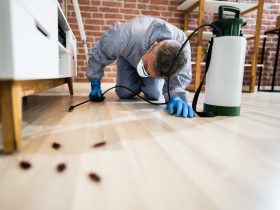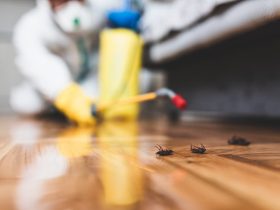When a fire breaks out, it doesn’t just destroy what it directly burns—smoke and soot continue to damage property long after the flames are extinguished. These byproducts of combustion can linger in the air and settle on surfaces, posing health risks and causing long-term structural issues. That’s why fire damage restoration in Fayetteville is essential for safely and effectively recovering a home or business after a fire. The process involves more than cleaning; it includes a thorough assessment and professional removal of harmful residues.
Why Smoke and Soot Removal is Critical
While many people focus on visible fire damage, smoke and soot can be equally destructive. These particles are acidic and can corrode metal, stain walls, and deteriorate electronics and upholstery over time. Left unaddressed, they can compromise the integrity of your building materials and make indoor air unsafe to breathe.
The Science Behind Smoke and Soot Residue
Smoke particles can infiltrate porous surfaces like drywall, carpeting, and insulation, embedding odors and toxins deep within. Soot, a fine black powder, results from incomplete combustion and contains dangerous substances including carbon and chemicals that cling to every surface. Immediate and professional removal is necessary to prevent permanent damage and protect your health.
Steps Involved in Professional Smoke and Soot Removal
Proper fire restoration follows a systematic approach to ensure all harmful residues are eliminated. The first steps often include an assessment of the damage and air quality testing. Technicians then use industrial-grade equipment such as HEPA vacuums and air scrubbers to remove particles.
Professionals also address areas not visible to the naked eye, such as behind walls and inside ductwork. Deodorization is an essential part of the process, eliminating embedded odors rather than masking them.
Understanding the steps after fire damage helps clarify why each phase, from inspection to full cleanup, must be executed with precision to avoid lingering damage.
Long-Term Consequences of Incomplete Removal
Failing to thoroughly remove smoke and soot can lead to long-term issues, including respiratory illnesses, persistent odors, and ongoing material deterioration. Even a seemingly clean surface can hide contaminants that continue to affect indoor air and pose health hazards.
Professional fire restoration teams not only have the right tools, but they also bring the training and expertise needed to detect hidden damage. Their goal is to return the property to a safe, livable condition, fully eliminating all traces of fire residues.
Standards and Safety in Fire Restoration
Professionals follow established safety protocols and industry standards during the fire restoration process. According to industry best practices, fire restoration specialists must use certified techniques and approved materials to ensure all contaminants are removed effectively and safely.
These standards aren’t just about quality—they protect your property and the health of everyone who enters it. Attempting to clean up smoke and soot without proper training or equipment can do more harm than good, making professional intervention a non-negotiable necessity.
Conclusion
Smoke and soot removal is not a surface-level task—it’s a detailed, strategic part of fire damage restoration that ensures space is safe, clean, and livable again. With the right professionals on your side, every corner of your property will be treated with the care it deserves. Addressing fire damage properly the first time can prevent future problems and provide peace of mind for years to come.







